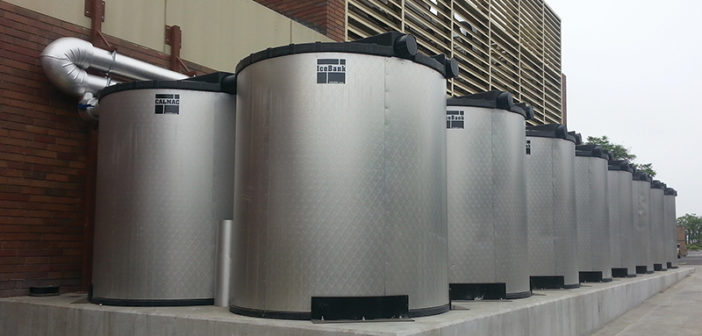CITY OF INDUSTRY, CA—Pacific Palms Resort, located here on the outskirts of Los Angeles, spans roughly 650 acres and features 292 rooms, conference and event venues, a spa and two championship golf courses. In a subtropical climate where hot summer days are the norm, it takes a massive effort to cool the entire property.
Due to an aging HVAC system and rising energy costs, Pacific Palms turned to IceBank thermal energy storage tanks, manufactured by Fair Lawn, NJ-based CALMAC, and energy-efficient chillers from Trane, a subsidiary of Ingersoll Rand.
“The resort needed to upgrade the out-of-date energy-inefficient systems we had in place,” said Sergio Delva, Pacific Palms Resort’s director of operations. “During the design phase, we made it clear that the new system had to lower our energy cost; have redundancies; and take advantage of cooler weather when the chances presented themselves.”
Paul Valenta, VP of sales and marketing at CALMAC, whose ice storage tanks are used by more than 4,000 businesses in 60 countries, explained how Pacific Palms uses the system.
“The resort uses a new 500-ton Trane CenTraVac centrifugal chiller, equipped with a variable speed drive to lower energy use, which replaced one of the resort’s 320-ton chillers. With high efficiency and low emissions, the chiller answers the resort’s energy-saving and sustainability goals,” Valenta explained. “Because a thermal energy storage system shifts demand out of peak periods of the day, the new ice-making Trane screw chiller operates at night, when energy is less expensive, to charge 16 CALMAC IceBank energy storage tanks. The tanks discharge during the day to provide cooling in tandem with the high-efficiency centrifugal chiller, helping to keep chiller use during the day to a minimum.”
He explained that thermal energy storage is like a battery for a building’s air-conditioning system. It uses standard cooling system equipment plus an energy storage tank to shift all or a portion of a building’s cooling needs to off-peak, nighttime hours. During off-peak hours, ice is made and stored inside IceBank energy storage tanks. The stored ice is then used to cool the building the next day.
“A good analogy is thinking about it as if you were to host a party,” Valenta said. “Hosting a party requires some planning to ensure a safe, happy, productive gathering. You wouldn’t want to start making ice the moment guests arrive because you couldn’t make ice fast enough. Instead, you’d buy or make ice ahead of time, store it in your freezer and use it as needed. The promise of thermal energy storage for a building is similar. During the week, you know the building will be occupied with guests. You plan to make the ice (cooling) ahead of time. For a building, however, the electricity used to make that ice (cooling) is far less expensive at night than it is during the day.
“There are also important benefits to the environment and the electric grid by planning,” he continued. “Shifting cooling from hours with high electrical demand reduces the strain on the grid and helps integrate more forms of renewable energy onto the grid. Thermal energy storage can store wind energy, which mainly blows at night. During the daytime, thermal energy storage can kick on when the sun isn’t shining, alleviating the grid of having to add peaking plants to meet spikes in energy use while helping hotels reduce expensive peak demand charges that can make up to 70% of the utility bill.”
Valenta said the first-year energy savings for Pacific Palms after the system was installed was nearly $342,900, with operational savings nearly $203,000. Utility company rebates totaled about $500,000. He added, “Typically, energy storage saves customers 10% of energy costs. However, we focus on the cooling cost savings, which is typically a 40-50% discount.” HB


